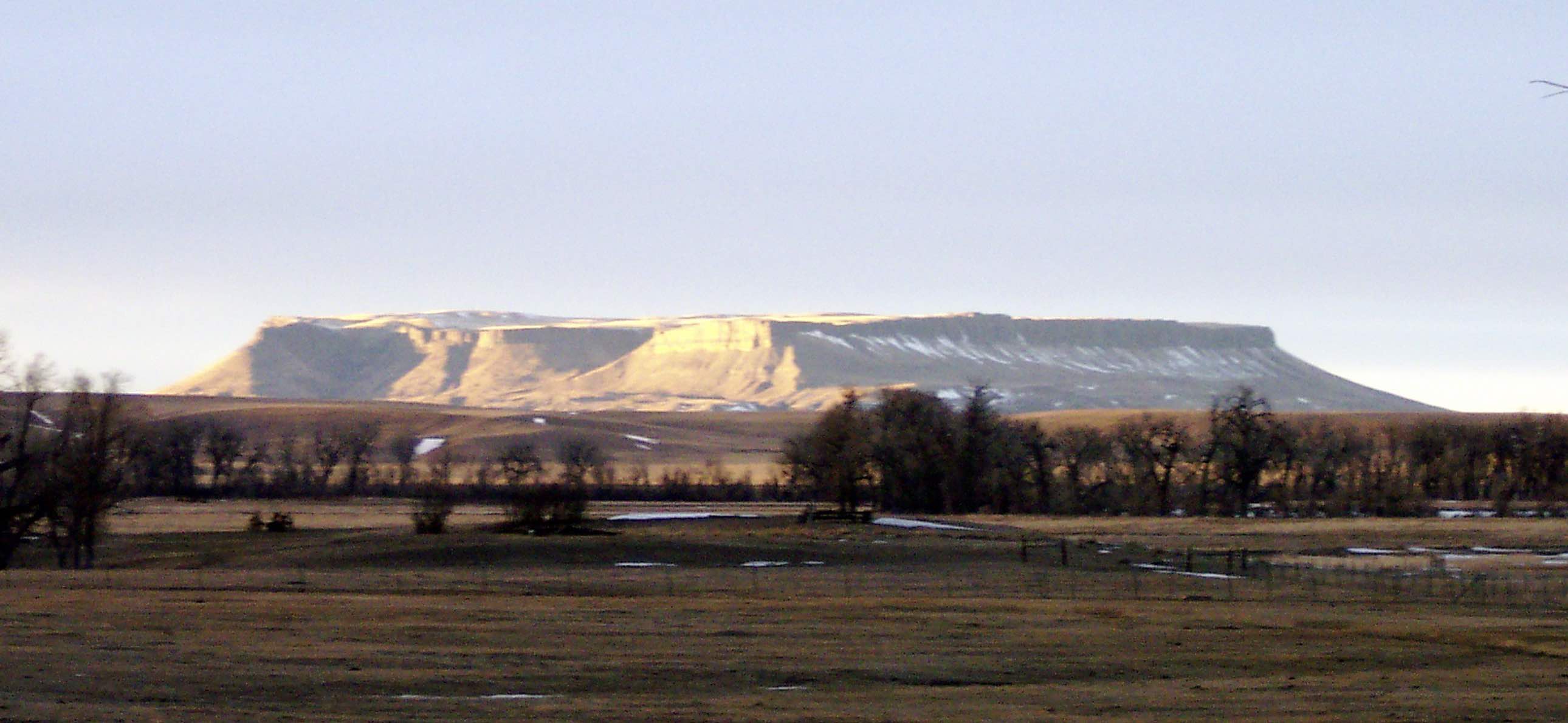
Before the flush of June’s greening, I grabbed some time to walk up the county road that cuts through the native grassland. As I walked, I framed a view without picking a mat color, wood molding, or type of glass. Instead, I used barbed wire and a weathered fence crosspiece to define my camera’s view of Square Butte, the area’s striking landmark.
Both in art and in life, a frame, whether it is of a physical or a cultural landscape, bounds the viewshed’s entirety within its margins. That boundary shapes the physical and gives focus for thoughts and actions. Although Square Butte has not moved for thousands of millennia, in fact since it was extruded through the earth’s surface as molten lava, my frame for it changes with my every movement. That fluidity of reality reminds me of how each of us continually frames and reframes our own viewshed, shaping our perspective.
My parents used Square Butte, which lies across the Missouri from us and is visible from 20 to 40 miles, to teach me where north was and how to use the Butte to find my way home. The rancher who owns the Butte trails his cattle yearly to its grassy, flat-top plateau, In another century, an entrepreneur saw that grass as a source for hay but couldn’t solve the problem of getting the product off the top. Realtors have reportedly dreamed of the potential on top for developments with a breath-taking view.
Tourists stop their cars on I-15 to snap pictures of this butte bulging 2400 feet out of the prairie to an elevation of over 4700 feet. The top, seemingly flat from afar, is really marked by undulating land, coulees, and traces of humans back through written history and into distant time. The landmark also provides habitat for wildlife, from mountain lions to raptors.
Early Indians reportedly viewed the Butte as part of a formation called The Rattlers. Lewis and Clark affionados see the formation through their perspective of all things referencing Lewis and Clark, the area’s first tourists who named the formation Fort Mountain.
Geologists look through the lens of their science. They see Square Butte as a laccolith, a geologic formation occurring in only one other area in the world and resulting from great volumes of lava that bulged up through weakened spots in the earth’s rocky surface.
Each day, each of us face how we overlay our perspective, our practice of how we frame our joys and burdens, our expectations and disappointments as we interact with our fellows and our responsibilities. The frames we use to adjust our views and positioning are uniquely ours, but that force of focus is shaped by the diversity of landscapes, both physical and cultural with which we have interacted.
And that feeds my belief that artists, no matter what the medium in which they work, frame parts of our reality showing us something deeper and wider. Something that is both elusive and demonstrable in the same moment. They help us, through their work, to see and make relevant for us what lies in our own viewsheds, both present and past.

Comments are closed, but trackbacks and pingbacks are open.